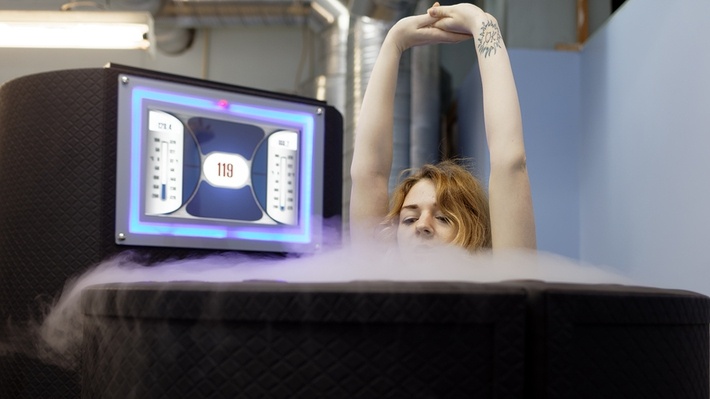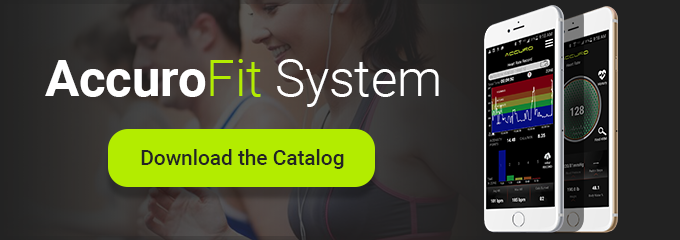Is Recovery Programming the Next Big Thing in Fitness?
From recovery-focused classes to designated recovery rooms, more fitness businesses are amping up their recovery-related programming. Here’s a closer look at the trend, including why it’s popular and how health clubs are getting in on the action -- or lack of action, as the case may be.
Balancing HIIT
HIIT training continues to dominate fitness trends. However, as concerns linger regarding the demanding nature of this intense mode of training, recovery programming is emerging as a natural response. This isn’t to position recovery programming as an alternative to HIIT training, but rather as a complement to it.
“Although it doesn’t appear that HIIT is going away anytime soon (it claimed the top spot in this year’s American College of Sports Medicine’s annual Worldwide Survey of Fitness Trends), there’s been an increased interest in counterbalancing those intense workouts with recovery-focused classes and services.”
All of this begs the question, "What is recovery programming?" Proposes Ace Fitness:
“This movement in the fitness industry (which is nothing new for elite athletes) is based on applying concerted and consistent recovery measures—foam rolling, stretching, light activity, sleep and more—to round out fitness programming. More fitness pros than ever are viewing exercise recovery as integrated with, not tangential to, clients’ (and their own) workout programs. The result is better overall performance and health.”
A Fast-Growing Trend
According to ClassPass’s breakdown of US fitness trends, recovery-related fitness was the industry’s fastest growing trend in 2017. Specifically, the number of people taking recovery, restorative and meditation classes grew by 16 percent last year.
The recovery imperative is shared by instructors and students alike. American Council on Exercise-certified personal trainer Pete McCall told Club Industry: “Instructors are learning more about recovery, and they’re sharing that with their students when they teach classes.” The example of elite athletes who use recovery strategies is also motivating others to follow suit.
“If I see a runner in my age group crushing it in the times, and if I found out he or she is wearing compression tights or doing cryotherapy, I’m doing to do the same thing,” continues McCall.
Incorporating Recovery Into Your Programming
Recovery-focused health care centers and personalized stretching studios are growing in number. Consider New York City’s reCOVER, which offers everything from compression boots to sleep support systems to pressurized pod treatments. Owner Aaron Drogoszewski told Club Industry, “Our [business’ model is excelling. People seem to be receptive to the notion of recovery.”
But you don’t have to exclusively specialize in recovery to get in on the trend. Adding a recovery room is one way health clubs can position themselves to meet the recovery interests of their members. Says running coach Rich Velazquez, who works at a fitness business which recently debuted a recovery space, “We were telling people, ‘Make sure you stretch and cool down,’ but we weren’t giving them a place to do it. We had some people who were brave enough to stretch in the reception area, but that’s not comfortable.”
In addition to offering compression sleeves to promote circulation, the recovery room includes everything from foam rollers and soft lighting to relaxing music and yoga mats. “We were trying to keep the environment quiet and relaxed so that people can actually recover. The feedback has been very positive,” says Velazquez. Massage, stretching, and reflexology are also appealing recovery room features.
Another popular recovery-related trend? Integrating recovery methods into group classes and/or introducing recovery-focused classes.

From Expense to Investment
Whichever route you go, the imperative is clear. “Recovery is no longer option for health clubs,” asserts Club Industry. Says CryoUSA managing partner Mark Murdock when discussing the benefits of investing in popular recovery technology cryotherapy, “Cost is what you pay; value is what you get. By spending money on recovery, gyms actually increase the lifetime value of their clients and see more profit.”
One last thing to keep in mind is that some of your members may not be aware of recovery programming yet, which is why spreading the word is key. Concludes Velazquez, “Education is the key in fitness. There’s just so much out there on the internet that’s incorrect, so the more education you can put around [your service], the more special your service becomes.”
The same applies to marketing all of your products and services, including fitness technology. Download the Catalog today to learn more about how the AccuroFit system can help further support member retention and recruitment.




Join the conversation